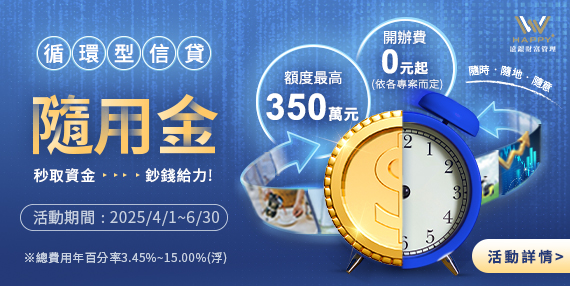08.2020 Cover Story
In the post epidemic era, aiming at business opportunities of gaining followers to boost membership economy
Li Jingfang, executive director of group comprehensive efficiency and retail planning headquarters /



In early 2020, novel coronavirus pneumonia attacked the world, and the world's 12 large economies were hit severely. Even in the Taiwan where the epidemic situation was relatively stable, most industries were affected, the performance seriously slumped, and even layoffs, unpaid leave and closing of shops happened. In the March issue of Common Wealth Magazine, the cover story "customer success of making it through in times of great difficulties" analyzed that it is more important to retain loyal customers than to develop new customers in a recession. Looking back on the financial crisis in 2008, when the competitors reduced costs and services due to the recession, the companies whose performance can grow took root and concentrated resources on loyal customers, which also laid the foundation for growth when the economy recovered. Customer management is an important and key issue both in the current epidemic situation and in the post epidemic era.
It is urgent to manage members in depth
Today's top enterprises in the world, such as Apple, Amazon, Starbucks, Netflix and so on, take membership as the core of their corporate strategy. Because of the "customer lifetime value" brought by the membership economy, it creates a stable source of cash flow for enterprises and avoids drastic financial changes caused by external market fluctuations.
In the digital era, through the use of technology, turning one-time consumers into loyal super users, and consumers who are willing to recommend and share to super advocates is the only way to create an endless stream of money for enterprises more efficiently! Whether B2B (business to business) or B2C (business to consumer) enterprises should attach importance to the maintenance of membership, so as to enhance adhesion and loyalty, increase economic value, and then promote new business opportunities of "subscription economy". Good interaction experience can be transformed into a long-term relationship of providing continuous service for customers, so as to drive the growth momentum in the future.
In the past, the shop assistants remembered the faces of familiar customers and the point cards were applied. Nowadays, enterprises collect customer information, analyze data and track through digitization and made the next prediction. With the continuous updating of membership business model, membership management has become a hot topic in the market. In the field of new economy and new retail, members play a key role. Membership drives innovation and transformation by examining customers' journey, providing seamless products and services, and finding new business models or commodity opportunities.
According to the book "The Membership Economy" and my personal observation, there are three core factors to promote the evolution of membership business model
1. The cost of acquiring customers soared
Netflix's cost of acquiring new customers in 2017 is more than twice that of four years ago; and according to the research of Bain Management Consulting, 60% to 80% of customers will not visit the company that once met their needs. In other words, most new customers will not give the opportunity to buy again if they try their best to satisfy customers. With more and more choices in the market and lower costs for customer to another company, not only large enterprises need to face this dilemma, it is also inevitable for start-ups and small companies.
2. Mobile data makes personal behavior easier to master
Thanks to the substantial increase of mobile devices, enterprises are easier to track users' behavior patterns, quickly grasp the preferences of old members, and meet their personalized needs. Among the six key technologies to make one become member, including marketing automation, customer relationship management, community, customer success, loyalty, etc., all are based on complete master of the mobile data, which makes incomplete users’ portraits in the past clearer with the help of digital tools.
3. The main customers have high CP value
Harvard Business Review once mentioned that the development cost of new customers is five times higher than that of old customers; the survey of Stitch Labs, a well-known consulting company in the United States, also found that regular customers account for only 12% of the total number of customers, but consumption accounts for 25% of the total revenue, and the unit price of customers is 15% higher than that of ordinary customers, and the consumption within one year is 120% more than the ordinary consumers. Take Amazon, an online retail giant in the United States, as an example. The annual consumption of prime members is nearly 85% higher than that of ordinary members.
For enterprises, it is more and more difficult for enterprises to obtain new users, especially when the market competition in which consumers dominate is more intense, and customer loyalty is more important.
With the rapid development of science and technology, the evolution of member management is enhanced, and even the purchase behavior and cycle can be predicted. Before the member places an order, the merchant has already set a good incentive for the items required by the member, and provides the right commodity at the right time, so as to achieve the sales target!
Cross industry cooperation maximizes lifetime value of members
The key index of membership economy’s success lies in customer lifetime value and retention rate. FEG owns B2B industries such as textile, cement, construction, shipping, as well as B2C industries which face customers directly such as retail (department shopping centers, mass merchandisers), telecommunications, hotels, hospitals, education, banking, securities and ETC (BOT) business, providing consumers with goods and services in food, clothing, housing, transportation, education and entertainment.
From the perspective of a single enterprise, the value of each customer is limited. However, from the perspective of the group as a whole, it is easier to master every node and experience of customers' journey through 360 degrees, and improve KYC by tagging, the lifetime value of a customer / member can be brought into full play, and then through the integration of group service resources and capitals, the economic scale and scope can be expanded, and more sales synergy can be created.
In the retail industry, membership management has always been one of the important topics for the industry. As early as in 2005, Far Eastern Group launched Taiwan's first cross store and cross industry membership card "HAPPY GO". In the first year, it recruited 2.5 million cardholders. This was because it saw the market opportunities and met the needs of customers at that time. With years of hard work, members of HAPPY GO have reached 16 million, laying a valuable foundation for the management of group’s members.
With the popularity of smart phones and the change of consumers' types, HAPPY GO card has been digitalization. Combining with the mobile payment service "happy go pay" launched by FEIB, it connects the internal resources of the group, as well as the application scenarios of retail fields, telecom, hotels, FriDay shopping, etc., to make the use of the cards broad. It connects customers' life situations more widely, making accumulated points seamlessly connect with consumption payment. Through the HAPPY GO members and the points economy ecosystem, we can effectively improve the adhesion of customers within the group, and obtain more new members, so as to maximize the lifetime value of group customers.
Seamless connection of customer journey with science and technology to trigger membership economy
In the face of more and more fierce market competition, the decisive battle of retail channel is not only the differentiation of business model and commodity, but also the basis of service, which is to solve the weak points and enhance the value with customer demand as the core.
With the popularity of smart phones, business operators can accurately grasp customer footprints through apps. When they collect more consumption information, they will be able to track and predict consumer behavior patterns, and then further provide customized services and appropriate goods to drive consumption times and stickiness. Retail app is the first choice for consumer in service integration. According to foreign research reports, 67% of smart phone users will download retail app, of which more than 50% are for coupons and membership discounts. More customers choose to use retail app payment, so that the functions of membership points, consumption discounts, bank discount, and electronic invoice can be completed in one's hand. Take Big City as an example, the consumption amount of APP members is 1.33 times of that of general members, and the consumption of members who bind mobile payment is 2.11 times of that of general members. Through the seamless integration of points and cash flow, the membership economy is effectively improved.
In addition to mobile phones, they also try their best to retain traces of customer behavior in retail stores. The Xinyi A13 smart mall built by Far Eastern Department store has set up a large interactive screen, which not only introduces the information of different floors, but also judges the age and gender of consumers through the above lens when they are close to the screen, and then recommends the corresponding products. In addition, the Far Eastern Department store also uses smart POS cash register system. And the tools such as boards, screens and app distributed in all floors enable customers to receive messages in more diversified and more differentiated ways based on the actual shopping consumption of members. Driven by digital technology, from mass, groups to personalization, it achieves the goal of accurate marketing and retaining customers for longer time.
Another key point of the membership economy is to make the fan economy realizable, turning supporters into consumers. In recent years, Big City has been actively developing more intelligent app with more integration. Through online to offline (O2O), interactive mode and exclusive promotion activities are used to attract 580000 Facebook fans to become app members, and they take the initiative to enter the stores, which online traffic has been turned into offline transactions. Big City has established the RFM analysis model of consumers (recency, frequency, and monetary) to master the profile and preference of consumers through the consumption data. Then, app is used to transmit customized activity notifications and preferential information, or to predict / support decision-making, and feedback is made after the activity and PDCA is used to make continuous improvement and optimization. At the same time, big data analysis can also be used as a suggested guideline for holding various activities. It can tailor activities that meet the needs and preferences of young people, families with children and other different customer groups, so as to attract people to shopping centers. "Continuously active communication with members", "connection of information and analysis of customer group" and "accurate marketing after calculating consumption trajectory" are the three key factors for Big City to master the virtual Reality Integration and move towards smart shopping mall.
Return to original intention and take customer's demand as the core
Jeff Bezos, founder and CEO of Amazon, once said, "The first principle of operation is customer obsession, we not only listen to what customers want, but also innovate for them”. The retail and consumer service industries are facing more and more fierce competition. Our decisive battle is not only the differentiation of business models and commodities, but also the return to the core of service. In the past, many business operators tried their best to manage the super big business when the consumer's shopping transaction completed, hoping that he would buy more and often ignoring what the customers really needed. Can we provide the products or services that our customers need at the right time and place? Returning to the basic value of customer relationship management, taking customer demand as the core, and quickly solving customers’ weak points and improving brand value with the help of science and technology can make enterprises be evergreen.

















